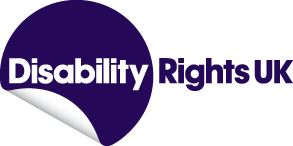Governance: An online resource to support Disabled People’s Organisations (DPOs)
These guidance notes are aimed at Disabled People's Organisations (DPOs) and are divided into different sections for ease of use. They provide an explanation of the key principles with additional hyperlinks for those people wanting in-depth information and real-life examples.
Resource contents
The Board Directors and Trustees
The Directors Pack should cover, as a minimum:
Induction meetings should cover as a minimum:
Developing a Governance structure
All Boards need some formal roles to operate well:
Keeping the organisation on track
Developing an Operational Delivery/Business Plan
Identifying who is responsible
Reporting our Performance to Others
Help and support: Useful links
What is Governance?
Quotes form the organisation’s involved in the co-production discussions:
“It’s about ensuring the organisation does what it says in its legal aims and objectives”
“It’s about providing direction”
“It’s keeping the organisation ‘on track’”
“Ensuring it has the right policies and processes in place to ensure legal and safe operations”
“It’s one of the most important jobs – don’t tack it on”
“It’s the development and management of Strategy,
“It’s Management of Risk, Finances and Assurance.”
It’s not the day to day running of the organisation.
However, if your organisation is a young and developing Community Interest Company (CIC) or Charity, the Directors and Trustees may have to be involved in more day-to-day direct control of activities – as your organisation grows, good governance requires clear lines of delegation to employees and stepping away from the operations.
More information for Charities: Charity Commission guidance; Requirements of a Charity Trustee; Essential Trustee Duties
More information for CICs: How to form a CIC; The role of directors and members; Maintaining good governance
The Board Directors and Trustees
Board member requirements
- Are legally responsible for the organisation
- Are proactive, forward thinking, and can see the big picture
- Must support the values, ethos, philosophy of the organisation
- Have the skills, expertise & knowledge that the organisation needs
- For DPOs, most or all, of the Board should have lived experience of ‘disability’
- Should be diverse and reflective of the community and users
- Have time to give to be effective in the role
Example: Disability Positive’s Trustee role description
What do Board members do?
They focus on compliance and assurance.
- Focus on whether the organisation is doing the right things in the right way for the benefit of the members or users
- Develop & agree the overarching organisational strategy
- Provide a supportive and scrutinising environment
- Ask questions to assure themselves that the organisation is doing the right things
- Ask for evidence and information
- Check whether the organisation has enough resources
- Check policies will ensure compliance to legal requirements
- Review themselves as a Board to check they are the best they can be
Example: NCVO’s essential trustee responsibilities
The difficult stuff…
Trustees/Directors
- Must be able to challenge, scrutinise and support the staff
- Must respect each other's opinions
- Should move-on after an agreed period of time – renewal and change of membership, introducing fresh views and expertise needs to be balanced with stability
- A Board of Trustees/ Directors should not be made up of friends or friends of the CEO/ Manager
Becoming a Board Member
- Ideally, everyone should ‘apply’ for the role of Board member/ Trustee/ Director
- There should be a role description, to understand from the start what the role is all about
- Have a term of office (how long they will be a Trustee/ Director)
- Must understand the delegated authority they give to staff (who makes what decision?)
- Must sign up to a Code of Conduct
Example: Association of Chairs Trustee recruitment resource
Example: Breakthrough UK’s Trustee advert template
Example: Disability Peterborough’s Trustee Code of Conduct
When they join the organisation board members should be supported to ensure they understand the role and the organisation – have an induction programme and be given a core set of information or a Directors Pack.
The Directors Pack should cover, as a minimum:
- Memorandum & Articles and Articles of Association
- Governance structure (names and roles of all meetings/ committees)
- Terms of Reference for Board and all sub-committees
- Names and pictures of all other Trustees/ Directors
- Trustee/ Director Role description
- Scheme of Delegation
- Code of Conduct
- Current Strategic Plan
- All other organisational strategies - Marketing, Fundraising, Media etc
- Current Business/ Operational plan
- Description of areas of service and business
- Staff structure / chart or names and roles
- Contact email and number for the CEO/ Manager
- Declaration of interests
- How to deal with media enquiries
- Link to Charity Commission guides CC3 and CC27 or CIC Governance Guide Chapter 9
Example: Disability Positive’s Scheme of Delegation template
Example: Declaration of Interest template
Getting job ready:
Induction should be formal and informal. Send the formal pack of important documents to the new Trustee to read in their own time, ensuring the information is accessible of course, then offer time for the new Trustee/ Director to ask questions and include time and space to describe the organisation – over coffee is always nice.
Induction meetings should cover as a minimum:
- Clarifying anything from the induction pack
- Restate the principles & values of the organisation
- What is expected of the Trustee – how many meetings are a minimal requirement
- How the Governance structure operates in practice (Board, Sub committees and procedures)
- Who has what responsibility for what
- The current Strategic Plan
- Current areas of service and business and how it operates – meeting staff and visiting services
- Any plans for development
- Key current risks
- What’s expected from the role of Trustee - minimum number of meetings to attend
- Declaration of Interests - to avoid conflict
- How to deal with media enquiries
New Trustees should be required to participate in core set of training and a log should be keep of all training attended by Trustees/ Directors.
Some of this can be self-directed and includes reading Charity Commission Guidance or CIC Guidance
It is also good practice to offer within the first year, training on:
- Charity Governance
- Disability Equality/ Social Model
- Safeguarding
- Data Protection
Other useful training:
Media, finance & other equality training
Give your Trustees / Directors an opportunity to identify their own training needs during their Annual Appraisal.
Training can be done in-house as there are many good resources available or your local Voluntary Sector infrastructure organisation will offer free / low-cost courses for Trustees, others can be purchased via NCVO or other organisations.
Example: Disability Positive’s Trustee training log
More information for charities: The essential trustee: what you need to know; Charity trustee training
More information for CICs: Sample job description for a treasure; Governance and compliance
Being organised
Organisation is key – Governance is important it’s not an ‘add on’ to organisational activities, it is as important as delivering services.
Developing a Governance structure
A Board should formally meet at least four times per year - described as every quarter.
For most Charities - one meeting might need to include your Annual General Meeting (AGM) – you will have described in your Articles of Association if your organisation requires and AGM .
The Board can meet as many times as it needs to outside of the four formal meetings each year.
It is very common to have Sub Committees or other meetings to ensure all Governance business can be dealt with and issues agreed efficiently at full Board meetings.
Common and important sub committees are:
- Finance
- Risk and Audit (Finance, Risk and Audit are often one committee)
- Human Resource
- Governance
You will need to decide what structure works for you.
Board meetings
Board meetings are the place for formal decision making, approval of recommendations, assurance that finances are in good order, assurance that the work of the organisation is on track, questions and challenge, understanding the risks ahead and how the organisation will overcome them.
Planning and structure of Board Meetings - agendas and reports should focus on:
- Progress against the Annual Plan (Strategic and Operational / Business Plan)
- Finances
- Risk & Assurance
- Compliance
- Policy renewal
- New development
The CEO or Manager Report should contain a summary update of KEY issues and current performance against Strategic Plan, key development opportunities or risks to the organisation, reassurance or risks on compliance with GDPR, Health and Safety etc. A summary of important operational issues with clear recommendations.
Financial Reports – against the work programme in your business plan. Right spend in right places? Enough money to last the year?
Risk Reports - use registers or on a page or risk two dashboards. Agree at Board your key risks for the year, staff will then report against the. Use colours for ease of understanding and impact of risk - Red, Amber & Green ( RAG) rating or symbols thumbs up and down , smiley or sad faces etc. It doesn’t matter how your score or show it so long as Trustees/ Directors can understand current risk position and whether it’s changed from the quarter before.
Ensure the reports include a description of the ‘mitigations’ (actions to reduce risk) that are in place or being thought through – this is your assurance!
Performance Reports – how we performing against the Key Performance Indicators (KPIs) set in the Business Plan?
You don’t need to see them all – perhaps select a top 6 or ten to focus reports on that are spread across the various parts of the organisation. Remember the Board doesn’t need to get into managing the detail. Use colours or symbols again to provide impactful and accessible analysis of performance.
Customer Voice and Complaints - tell you a lot about how your organisation is performing and allows you to celebrate and scrutinise.
Customer Voice/ feedback – a selection
Customer/ user complaint’s – summary of in what areas and what was done.
Remember it’s not your responsibility to resolve complaints – it’s the Boards role to ask “Why have we had complaints about this service? What information/ assurance has been provided to show us they have been dealt with and we have learnt from them?”
All Boards need some formal roles to operate well:
- A Chair - leads the Board in ensuring it fulfils its governance & legal responsibilities. Works in partnership with the CEO / Manager and often acts as a key ambassador for the organisation. The Chair should be involved or briefed on the Board agenda.
- It’s common to have a Vice Chair in case the Chair is unavailable for a meeting and be a point of contact for the CEO/ Manager in the Chairs absence.
- A Treasurer to be responsible for ensuring that finance information held by the organisation and presented to the Board is up to date and understandable.
It’s important to remember that even with these roles in place all Trustees/ Directors remain jointly responsible for the organisation – eg: all Trustees / Directors share responsibility for finances not just the Treasurer!
Someone needs to be responsible for ensuring Board meetings are well organised and Trustees have what they need. This is usually the most senior Manager in the organisation. It should be in their job description and the responsibility must sit with a staff member if you have them. For larger or growing organisations some with have an individual formally named as the Company Secretary (but it is not a legal requirement) or other staff will help too by preparing reports.
Example: Disability Positive’s Treasurer role description
Example: Treasurer job description template
Meetings DO need:
- Structure and agreed approaches an agenda, so everyone is clear what will be discussed, how long you will spend on each item and what is expected from each item
- A good Chairperson
- Excellent minutes/ notes
- Action logs – what’s agreed, who’s responsible for the task and reported to the next meeting
- A quorum – how many Trustees or Directors are needed at each meeting to make decisions
- Planning in advance - dates should be set for the year for the four minimum meetings
- Clear accessible reports with clear asks of Trustees and clear recommendations for approval. Reports don’t have to be on paper – could be recorded or in any accessible format.
- Reports MUST be sent in advance of the Board/ Sub-committee meeting – preferably a week including a weekend, so all Trustees have time to read, ask clarification questions and gather their thoughts
- Meetings should be no longer than 2 hours (with breaks)
By law you must be able to show the Board has met, what it discussed and what it agreed – this is why Board Meeting minutes/ notes are VERY important.
Example: Board agenda template
Example: Beyond Empower’s Board agenda template
Sub Committees
Sub committees or other meetings ensure all Governance business can be dealt with and issues agreed efficiently at full Board meetings.
Common and important sub committees are:
- Finance
- Risk and Audit (Finance, Risk and Audit are often one committee)
- Human Resource
- Governance
Finance Committees are very important and are usually responsible for:
- Having full oversight of the organisation’s finances
- Monitor the financial performance of the organisation
- Ensuring accurate financial reports are prepared that accurately reflect financial performance against the annual budget
- Ensure all accounts are reconciled
- Review financial policies and make recommendations for any changes
- Oversee the preparation of the annual budget and ensure it is aligned to the strategic objectives of the organisation
- Managing the appointment of the auditor (to be approved at the AGM or Board) and review their performance.
- Ensure that the annual audit occurs, and the financial reports are prepared in accordance with any accounting, audit and statutory requirements.
- Ensure that any surplus funds are investment in a prudent way.
- Review the Finance and Financial Controls Policy, Investment Policy and Reserves Policy
Risk & Audit Committees are very important and are usually responsible for strategic risks, usually the committee will:
- Carry out a full review of strategic (key) risks at least quarterly
- Review the mitigating actions reported by staff
- Ensure that any significant risks that arise between formal risk reviews are added to the matrix
- Periodically audit/review Company processes
- Maintain a register of audit/reviews carried out
Example: Disability Positive’s Finance and Audit terms of reference
Human Resource Committees often only meet once per year, or during times of significant re-organisation or to ‘hear’ reports from Grievance and Disciplinary issues.
This committee will:
- Oversee significant staffing issues including staffing restructures,
- Agree ‘renumeration’ (the salary levels) of senior staff
- Oversee grievance and disciplinary matters
Governance Sub Committees – are important to review the way your organisation works, ensure you have a strategic plan and check governance policies are up to date (see later section Governance Review).
This committee will often:
- Ensure the organisation acts with good governance guided by the Articles of Association, byelaws and relevant legislation
- Take responsibility for the recruitment, induction and ongoing support and development for all Trustees members of Committees
- Conduct an annual review of Trustee members and consider succession planning
- Oversee the process by which Trustees receive feedback on their performance.
Example: Disability Positive’s Governance Committee Terms of Reference
Delegated authority
Delegated authority can be given to the ‘sub’ meetings (see next section) – this means they can discuss things in more depth and can make decisions which they ‘report’ to a full Board. Or for some issues the sub-committee may bring recommendations to the full Board for a decision. This should be described in a Scheme of Delegation.
Annual General Meeting (AGM)
If your organisation requires an AGM, it should as a minimum:
- Approve your accounts – agree all finances in order, and that money has been spent on what it should have been. Be shown that the organisation has enough funds to continue its operations
- Appoint / approve your Board of Trustees / Directors
- Approve any changes to your Governing Documents to enable you to run effectively and meet the aims of the organisation.
Everyone must be given good notice of the AGM – usually a minimum of 21 days (but you will have described this in your Articles of Association) and the opportunity to send in their votes on any issues or allow someone to vote for them - ’proxy’ vote.
For some organisations members as well as Trustees must be invited to the AGM.
The notes/ minutes of the AGM must be formally recorded
Overall - It’s important to organise your Board and Sub Committee meetings in a way that works best for your organisation.
Example: Annual General Meeting (AGM) template
Other ways of doing things:
Some organisations do not have Sub Committees or in addition to Sub Committees they have given delegated authority to Board Members to discuss and action topics outside of Board Meetings, bringing updates back to Board and final recommendations. These are sometimes called Development sessions or Task and Finish Groups they focus on topics such as; business development, marketing, fundraising, social impact and Governance. This approach enables more detailed work to take place between Board meetings and present clear well thought through recommendations to Board.
Top tip: Board meetings will only be effective if members have read / watched / listened to the reports in advance and engaged themselves in the item/ issues.
More information for charities: Annual General Meetings (AGMs); Trustee roles; Role of the Chair; Role of secretary; Managing conflict of interest
More information for CICs: Constitutional documents; Ten attributes of a great Chair
Making Decisions
It’s harder than it sounds!
It is important that the Board make clear and timely decisions about the right things.
Things that enable decision making are:
- Understanding who is responsible for what - It’s called having a Scheme of Delegation
- What staff can make a decision on without Board involvement?
- What is the Board responsible for?
- Sticking to Strategic issues – For example:
- It is not the Boards role to organise design and manage services – It is the Boards role to discuss, develop and agree an annual (or longer term) plan for the organisation and ask questions and ask for information to demonstrate that the plan is being delivered
- It is not the Boards responsibility to agree staff rotas or what stationary to buy - It is the Boards responsibility to ensure that overall resources are organised well, and funding/ money is spent wisely on the right things
- It is not the Boards role to discuss how to organise a service – It is the Boards responsibility to ensure that a service is delivering the outcomes for service users that reflect the organisations objectives & values and ensure it meets the requirement of funders.
- It is not the Boards role to respond to complaints – It is the Boards responsibility to monitor the number of complaints and ask the staff - why there have been complaints and be reassured they have been responded to according to the organisations complaints policy.
- Clear Board agendas, that focus on:
- Progress against the Annual Plan (Strategic and Operational / Business Plan)
- Finances
- Risk & Assurance - with a Risk Register
- Compliance
- Policy renewal
- New development
- Clear and accessible reports with enough detail for the Board to understand the issues, performance, risks, mitigations or successes and contain clear recommendations or ‘asks’ of Board members so everyone is clear of the purpose of the report being presented to the full Board or subcommittee.
- Clear Recommendations. “So, you need to be clear what you are asking for?” detail exactly what is needed from the Board on each item – what requires: approval, discussion or noting.
- Sub committees or action sessions between Board meetings can focus on other important issues eg: business development, marketing strategy that enables more detailed work to take place between meeting and return to Board with clear recommendations. For this approach to work delegated authority should be given to the Sub Committees or Action groups to ensure the detail is not re-hashed at Board.
- A good Chair supported by an organised agenda, who can ensure that all Board meetings items are given a good ‘airing’ and given time and are driven to the action needed – a decision, approval or noting.
Declaration of Interests/ Conflict of Interest Trustees/ Directors must make decisions based only on what’s best for your organisation. Personal interests, or the interests of people or organisations connected to you must not influence decisions. It’s essential to have a register of Declaration of Interests for each and all Trustees which is updated annually. Trustees/ Directors should also declare any interest in individual agenda items at all Governance meetings.
Example: Disability Positive’s finance report
Example: Risk Dashboard
Example: Risk Register
Example: Job Description for a Chair
More information: It's your decision: charity trustees and decision making; Conflicts of interest: a guide for charity trustees;
Keeping the organisation on track
“Do we have a clear plan?”
A key role of the Board is to develop and agree a plan or plans for the organisation which describe who you are, what you want to achieve and how you are going to achieve it. It’s your direction of travel or Strategic Plan.
Lived Experience centred
All Disabled People’s Organisations need a clear overall purpose that is centred on lived experience. Then have a clear plan on how to deliver it.
The Board should ask themselves - what do we want to do?
Your answer is your vision / mission and it should be set out in the objects of your governing document.
Defining a vision should be, led by the voice of lived experience and considered against what’s happening outside your organisation (the environment in which you will be operating). This will define what you are going to do & why.
Directors and Trustees must be part of the development of your mission or must sign up to it when they join. The AGM each year provides an opportunity to amend your ‘objects’ if things need changing, but only if all the Board agree. This is the start of your Golden thread.
Defined Vision
Once the vision is defined it can be described in a plan with some key objectives – a Strategic Plan.
Directors and Trustees must be part of the development of your Strategic Plan or must sign up to it when they join. Some organisations hold a Strategic Planning Day and involve the voice of staff and members/ users.
The Strategic Plan will describe:
-
- Your priorities – to focus your energies and precious resources
- How everyone is working towards common goals
- New opportunities – what else would we like to do or be part of?
- Agreement around intended outcomes / results
- An outline of how you will achieve your plan
- It should guide you for more than a year
It doesn’t need to be long – some organisations can describe their Strategic Plan or Objectives on one page
How do we develop a Strategic Plan?
It is useful to involve lots of stakeholders in developing your Strategic Plan; Directors, members, users, staff and other stakeholders or partners
By considering some key questions…
- What would success look like in 5 years? (Blue sky thinking)
- What is the environment we will be working in? (External assessment /Political, Economic, Sociological, Technological, Legal and Environmental - PESTLE analysis)
- What are our strengths and weaknesses (Strengths Weakness Opportunities & Threats - SWOT analysis)
- What resources do we have now & what do you need?
The best approach is to gather lots of voices / views on these questions from Trustees/ Directors, members, users, staff, volunteers and other stakeholders using methods that best suit you then distil what you find and put this into your Strategic Plan. This is the second stage of your Golden Thread.
Example: Disability Positive’s 10-year Strategy Summary
Example: Breakthrough UK’s Strategy (Easy Read)
More information: Charity Strategy
Developing an Operational Delivery/Business Plan
To put your Strategic Plan into action you need to develop your operational delivery plan. This is the third stage of your Golden thread. Your plan will provide a framework for accountability.
Your Business or Operational Plan will:
- Be a much more detailed description of your goals (from the Strategic Plan)
- Will break the big goals into more steps (objectives/ work programmes) This helps guide the agendas for your Board and Sub Committees
- Make sure the steps are achievable
- Describe HOW you will achieve them
- Describe the resources you have and need
- Identify the key risks to achieving the plan and ideas of how you will reduce (mitigate these risks)
- Identify who will lead or be responsible for each area of action
- Describe how much it will all cost – your financial projections
- Describe measurements to show you have achieved your objectives – what are your Key Performance Indicators?
More information: Strategy and Business Planning
Identifying who is responsible
Identifying who is responsible for each area of action and putting into staff annual objectives & work plans which can be supported and measured through regular supervisions and annual appraisals is then fourth connection for the Golden Thread.
Feedback from Appraisals and involvement of staff in next year’s planning will mean the thread loops right back to the start again …
So back to ASSURANCE – how the Board knows they are doing the right things in the right way?”
If you have good solid plan/s in place the Board will be able to focus on the right and key questions to demonstrate good Governance:
“How will I know?” Ask yourself …
- Have we been assured that the organisation is on track with our plans?
- Have we been re-assured we have enough money and we are spending it on the right things?
- Have the risks ahead of us been identified and suggestions made of how we will reduce or remove the risk?
This takes us back to a well organised Board meeting, with the right kind of reports
The CEO or Manager Report should contain – a summary update of KEY issues and current performance against Strategic Plan, key development opportunities or risks to the organisation, reassurance, or risks on compliance with GDPR, Health and Safety etc. A summary of important operational issues with clear recommendations.
Financial Reports – against the work programme in your Business Plan. Right spend in right places? Enough money to last the year?
Risk Reports - use registers or on a page or Risk two dashboards. Agree at Board your key risks for the year, staff will then report against the. Use colours for ease of understanding and impact of risk -Red, Amber & Green ( RAG) rating or symbols thumbs up and down , smiley or sad faces etc. It doesn’t matter how your score or show it so long as Trustees/ Directors can understand current risk position and whether it’s changed from the quarter before.
Ensure the reports include a description of the ‘mitigations’ (actions to reduce risk) that are in place or being thought through – this is your assurance!
Performance Reports – how we performing against the KPIs set in the Business Plan?
You don’t need to see them all – perhaps select a top six or ten to focus reports on that are spread across the various parts of the organisation. Remember the Board doesn’t need to get into managing the detail. Use colours or symbols again to provide impactful and accessible analysis of performance.
Customer Voice and Complaints – tell you a lot about how your organisation is performing and allows you to celebrate and scrutinise.
Customer Voice/ feedback – a selection
Customer/ user complaint’s – summary of in what areas and what was done.
Remember it’s not your responsibility to resolve complaints – it’s the Boards role to ask “Why have we had 5 complaints about this service? What information/ assurance has been provided to show us they have been dealt with and we have learnt from them?”
Top tip: Your plans must not sit in a drawer they must be living documents and will be the key map for your Board.
Golden Thread summary:
Develop your Strategic Plan – engage lots of people in the process – develop a small amount of BIG Objectives
Then
Break them down into SMART deliverable objectives in your Business / Operational Delivery Plan, plan the resources you will need to deliver them.
Develop a list of measurable objectives – your Key Performance Indicators (KPI)s
Make sure you have key people responsible for each objective.
Report to Board on some, or all, of the KPIs
Example: Golden Thread visual representation
Reviewing Governance
A healthy organisation will take a good look at its Governance at regular intervals or on an ongoing basis.
Governance Reviews are different from setting your Strategy – it’s about the way check that you have the correct structure and formality to demonstrate you are fulfilling your ‘mission’ and governing effectively in your current environment.
How often you review your Governance depends on your stage of development. It could be you need a sub committee to oversee your Governance on a quarterly basis or once a year could be enough or your Chair and CEO/ Manager might manage the process via their regular supervisions / meetings and ensure the elements of a Governance review are included at Board meetings.
To review Governance, the organisation should check-in on itself asking key questions:
- Is our mission and key objects as written in our governing documents still right?
- Do they match what our community want and need?
- Are we still doing the right thing?
- Do we have the right Governance structure and approach to operate legally, most effectively and efficiently?
- Do we have the right sub committees? (can we manage decision making and urgent matters between full Board meetings?)
- Do all Committees have accurate Terms of Reference?
- Do we have the right Board of Trustees or Directors? (the right skills, knowledge, experience and number?)
- Do we have up to date and effective governing policies?
- Do we have an effective scheme of delegation?
Governance Sub Committee
If you set up a Governance Committee – it must have a clear Terms of Reference outlining; purpose/ responsibility, membership, quorum, Chair, its delegated authority, accountability, frequency of meetings. Key areas of responsibility usually include:
- Ensuring good governance guided by Articles and relevant legislation
- Responsibility for overseeing recruitment, induction, support and development of Trustees/ Directors
- Oversee terms of office and ensure succession planning and correct skills mix
- Oversee process for Trustee / Board feedback and appraisal
Example: Skills Audit template
More information: Good Governance – A Code for the Voluntary and Community Sector
More information: Carrying out a Governance Review
The Chair and the CEO/Manager
This is a very important relationship - It’s not about being good friends.
- This is a formal and supportive relationship with space for challenge and scrutiny
- The relationship should reflect trust and mutual respect
- All organisations need these roles to ensure ultimate responsibility for Governance issues
The CEO/ Manager should meet regularly with the Chair – usually monthly.
These should be formal supervision and planning meetings with an organised agenda and approach. Meetings will include:
- Governance issues
- Updates on the ‘business’ / operations/ services
- Updates on performance, organisational risks
- Finance/ resource issues
- Plan the Board meetings together, or the Chair should comment and agree on the draft agenda proposed by the CEO/ Manager.
Very important: The Chair should lead an Annual Appraisal of the CEO/ Manager and set their objectives/ targets for the year. The annual appraisal includes:
- A self-assessment by the CEO of their own performance to form the basis of the conversation with the chair.
- A review of progress since the last review. This will help track the effectiveness of the CEO’s development plan.
- A record of the tasks the CEO finds most enjoyable and those which they find difficult. This will help clarify the strengths and skills of the CEO and suggest development areas.
- Recording the learning and development opportunities taken up by the CEO & how these have impacted on the work of the CEO.
- The performance review is an opportunity to agree goals for the forthcoming periods. These should be in the context of the organisation’s strategic plan.
- Review the CEO’s job description with them to see if it accurately reflects the tasks undertaken by the CEO.
The Chair and CEO may or may not be involved in all Board Sub Committee / Development/ Action meetings between Board – so they should agree a method to keep up to date and each other up to date.
The Chair and CEO/ Manager are responsible for reviewing Governance arrangements on a regular basis. They should lead this work or ensure a sub-committee is arranged to oversee the work.
More information: Appraising your Chief Executive
More information: A Performance Review – Appraising the CEO
Reporting our Performance to Others
All organisations, no matter what the legal form, should, every year, put a report or information into the public domain or send it to Companies House that describe the organisation and its performance.
It is a key role of governance to ensure these reports are produced.
As not for profit organisations it is essential we account for how money ‘gifted’, ‘granted’ or awarded to has been spent.
We must also demonstrate that we are a well governed organisation and understand the environment we are operating in and the risks we face.
It’s important we are accountable and transparent.
Key reporting documents are:
- Accounts or Annual Financial Statement - including an annual report.
Your accounts will describe:
-
- Did you spend your money on what you were supposed to?
- Is there enough money to ensure the organisation can run for another year or more – are you a ‘going concern’
- A CIC must declare any dividends or PRP and transfer of any assets
- The Annual or Management Report within the Accounts or submitted alongside your accounts is important, for some organisations a legal requirement as it is lodged at Companies House. It tells your story, what you have achieved and what your big risks are and key objectives going forward. It demonstrated whether you are well Governed/ well run, whether you have shown your benefit to the community and consulted your stakeholders.
- An Impact or Annual Report – will tell your members, funders and others how you did.
- Did you stick to your Strategic Plan? What else did you do?
- What has been the feedback from people who accessed your services? Tell their stories. Demonstrate the impact of your organisation and benefit to disabled people
- How much money did you ‘raise’ or were awarded – what did you spend it on
Example: Disability Positive’s Annual Report
Example: Disability Positive’s Impact Review – Easy Read
More information: Prepare a Charity Trustees’ Annual Report
More information: Prepare a Charity Annual Return
More information: Statutory Obligations
More information: Impact Reports
More information: Six Impact Reports to Inspire You
Help and Support
Setting up an organisation / running a small DPO can be a lonely and hard job. We all need a little help and support sometimes…real people as well as websites are a real help.
Other organisations – your local Voluntary Infrastructure organisation / CVS will provide advice, support, and training on all aspects of Governance. Just takes a little ‘google’ to find them.
Peer Support – meeting with other disabled people’s organisations or other young organisations can really help. Other people who are also setting up or in the early days of setting up a DPO or other type of small CIC or Charity will all be in the same boat – it’s a real opportunity to support each other and share resources and learning. Your local infrastructure organisation might already have one – or ask for one to be set up!
Mentors
Other more mature DPO’s may agree to offer mentoring. Chair to Chair or to your CEO / Managers, Ex Chairs and Ex-CEOs of DPOs may offer Mentoring / coaching
And of course, the Governance support and information via links in this Hub to the Toolkit and Charity Commission and NCVO
Help and support: Useful links
National Council of Voluntary Organisations
Association of Chairs of Voluntary Organisations
Chartered Governance Institute
Written in partnership between:
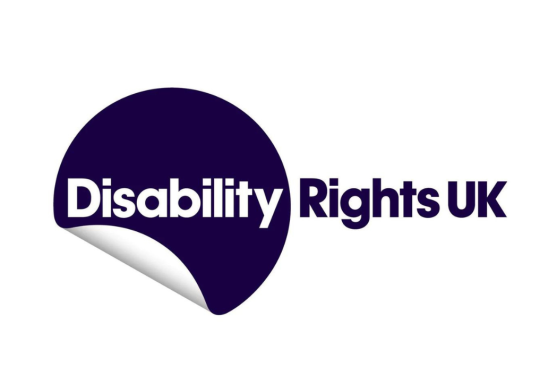
Disability Rights UK is the UK's leading organisation led by, run by, and working for Disabled people. They work with Disabled People's Organisations and Government across the UK to influence regional and national change for better rights, benefits, quality of life and economic opportunities for Disabled people.

Michele Scattergood has over thirty years of experience working with disability issues, Disabled People’s Organisations (DPOs), and the VCSE and recently retired from the role of Chief Executive at Breakthrough UK, a role she held for eleven years.
Michele is a highly experienced strategic leader, influencer, and operational manager in local government and the third sector, with strong business acumen and significant experience in change management, policy and business development. She has nationally known expertise in disability issues and was awarded a place on the ‘Power 100 list’ of most influential disabled people in the UK in 2017. Contact Michele @ Inclusiveperspectivesnw@gmail.com.
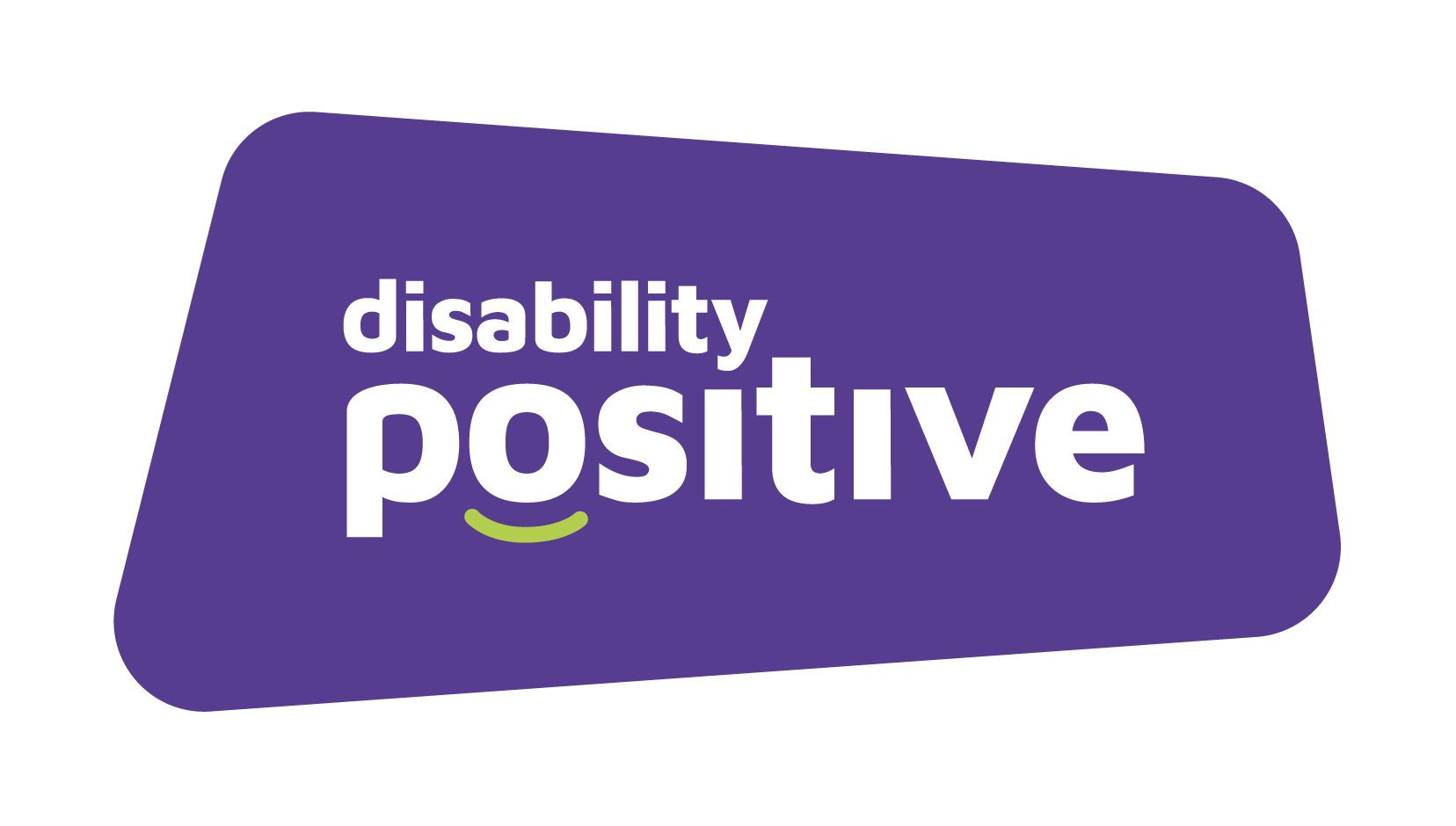
Disability Positive is a Cheshire based DPO that provide services, opportunities and a voice to Disabled people and people with long-term health conditions, and their families. Disability Positive provide services to help Disabled people with everyday life, being part of their local community and looking after their own wellbeing. They offer advice, help with practical tasks and advocate for people in lots of different situations.
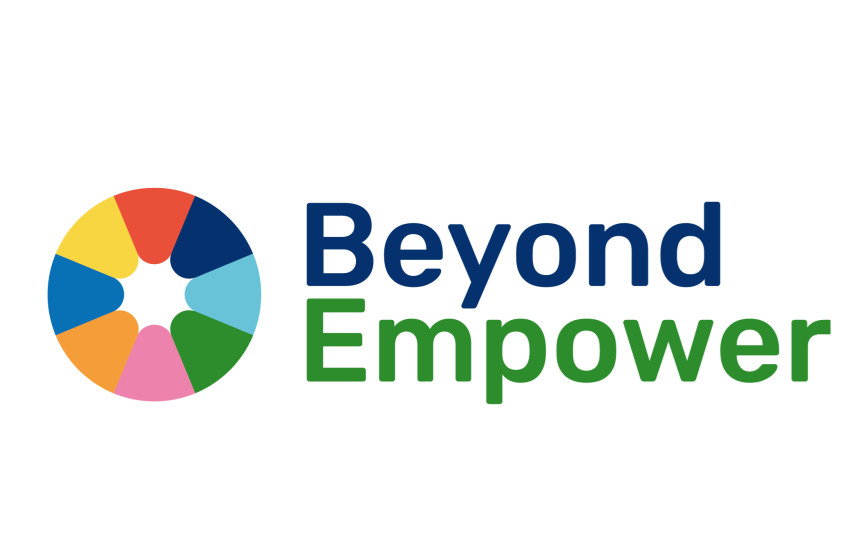
Beyond Empower is a Manchester based CIC that support Disabled people to lead healthy, active lives. They offer personal training services, access to green spaces, online physical activity sessions, and work with local authority infrastructure teams providing guidance on how streets can be made more accessible.
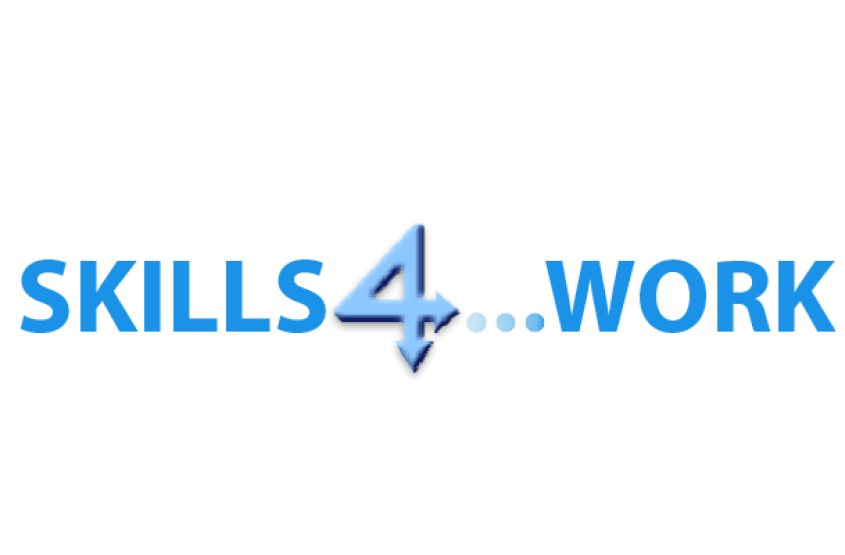
Skills 4 Work is a Newcastle Upon Tyne based charity that help young Disabled adults into employment. They provide support and assistance to individuals with learning difficulties, who want to lead independent lives and find access to employment, by improving employment skills, as well as personal development.

Nurtured in Nature is a Northumberland based CIC that support Disabled people with their mental wellbeing and provide opportunities for rural skills development leading towards employment such as forest school, foraging for health, nature therapy, and equine therapy.
